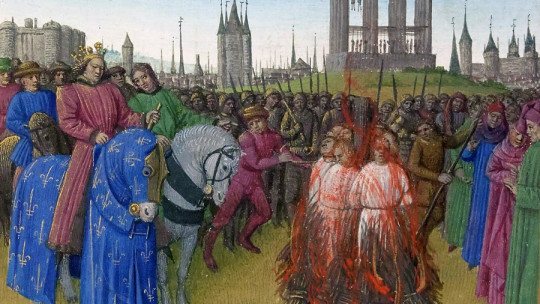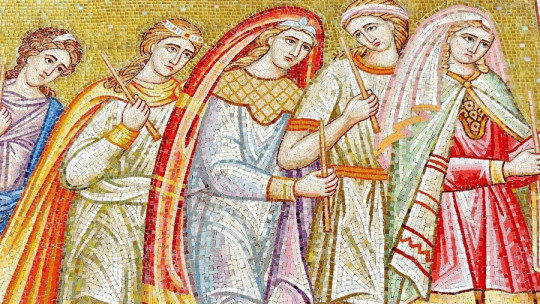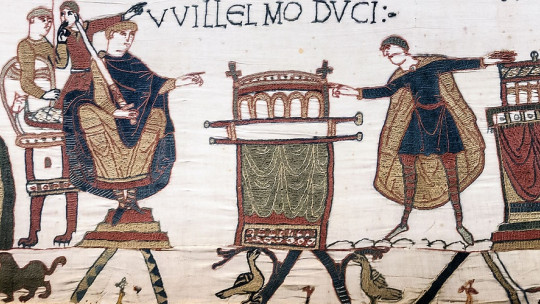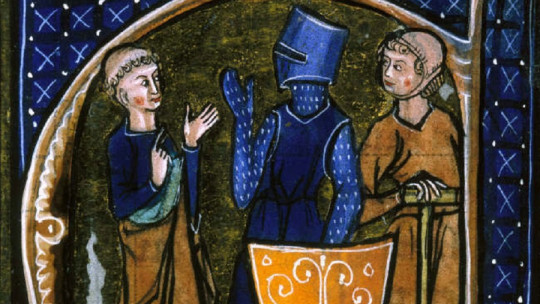Today there are very few people who have not heard of the Cathars. Cinema and literature have placed this medieval sect at the center of legends and myths, often as fascinating as they are unreal.
But Who really were the Cathars? Where they came from? What did they believe in? Why were they so annoying for the Church and for some kings and feudal lords? In this article we will try to approach this religious current of the Middle Ages and clarify its darkest points.
Who were the Cathars? History and keys to this heresy
Although its largest area of extension was Europe and, specifically, the south of France, Cathar philosophy came from the East. Specifically, it expanded from the Byzantine Empire and the Slavic countries throughout the 12th century, following trade routes and taking advantage of the fact that the Crusades had boosted human trafficking between Europe and Asia.
The Cathars drank from the philosophy of Paulicians and Bogomils , two eastern heresies that tended to consider the world as an absolute duality. The Paulicians have obscure origins, but are believed to have been born in the Armenian area; For their part, the Bogomils came from Bulgaria.
Both heresies had in common the rejection of material reality, considered the creation of the forces of Evil, and an absolute adherence to the spiritual part of the human being, which was the one that had been created by God. This point was later taken up by the Cathars, and represents the most characteristic of their philosophy.
A world full of heretics
To understand the success that Catharism had in the Middle Ages we must delve into the religious context. Because, contrary to what many people believe, during the Middle Ages there was no single, established and solid doctrine, but rather There were many dissident voices against the official Catholic Church l. Despite diverging on some doctrinal points, all these currents of protest had one point in their favor: the return to the absolute poverty preached with Christ.
For example, Arnaldo of Brescia, the founder of the Arnoldist movement (mid-12th century), demanded that the Church renounce its power and wealth; For their part, the Waldenses questioned those who called themselves Christians, but lived in opulence. Obviously, the Church took action on the matter, and both currents were condemned at the Third Lateran Council.
However, when the official Church realized the problem posed by these dissident currents, it was already too late. Heretical philosophies had deeply permeated medieval society, since the people saw them as much closer. Indeed, all of these preachers (and the Cathars among them) led a wandering life, preaching from house to house, and encouraged family religion and hospitality. Some of them, such as the so-called evangelists (11th-12th centuries) sowed the seed of what, much later, would be Protestantism, since They claimed the direct reading of the Gospels to achieve salvation

The Cathars and the rejection of the world
As we have already noted, the Cathars believed in duality: God had created souls, which was the only good thing, while Satan was the author of bodies, true prisons that deprived human beings of salvation. The dualistic doctrine of the Cathars went much further: the entire creation, which according to the Bible was a good work of God, had been designed by the devil Therefore, any physical manifestation was related to evil.
Thus, for the Cathars, chastity was something essential, since sex, being linked to the flesh and, above all, to procreation, was a direct emanation of the devil. However, not all the Cathar faithful followed this radical doctrine. In fact, their society was divided into two very different castes: the mere believers, on the one hand, who followed a secular life, marrying, working and starting a family, and the so-called “perfect” ones, who were those who had managed to achieve the way of salvation through the absolute renunciation of the world.
But this does not mean we should think that the “perfect” lived in isolation. On the contrary; Like all medieval heretical currents, they traveled throughout the entire geography to make their doctrine known. What differentiated them from simple believers was their absolute poverty and chastity, as well as their refusal to eat meat. The “perfect” were the only ones who could provide the consolamentum the only sacrament, if we can call it that, that the Cathars recognized.
The Crusade of the Cathars and the end of Catharism
At the end of the 12th century, the Cathar doctrine was established throughout the south of France, and enjoyed the protection of the feudal lords of the territory. The Cathars were well received especially in the Toulouse area, where they were most abundant. In 1209, Pope Innocent III decided to take action on the matter.
But why was the Cathar heresy so annoying, to the point of starting a Crusade? None of the other heretical currents had put the Church in check up to this point
The answer lies in the very nature of the doctrine of the Cathars. Because, while the other currents questioned certain behaviors of the official Church (lack of poverty, abuse of power, etc.), but continued to adhere to what Catholic orthodoxy was, Catharism went further and questioned the structure itself. not only of the Church, but of feudal society. The independence of the Cathars had led them to establish their own Church: in the Languedoc area alone there were five Cathar dioceses. Of course, the official Church could not allow such disobedience.
And it was not only a matter of ecclesiastical power; France was also involved in the matter and, in fact, it was the troops sent by the French king who fought against the lords of Languedoc in the Cathar Crusade. In those days, France was not what we know now. The possessions of the Capetian kings, the dynasty that ruled France at the time, were limited to Paris and the surrounding area. It is quite clear that, In the Cathar Crusade, there was also a political component since, after the defeat of the lords of Languedoc in 1229, the French crown annexed the county of Toulouse.
The last faithful
And what happened to the Cathars? The last faithful took refuge in the Montsegur castle, a historical resistance that has given rise to many legends. The truth is that, with the capitulation of the castle to the French troops, More than 200 Cathars were burned at the stake on March 16, 1244
The Cathar heresy would still survive for a few years (in 1255 some took refuge in the castle of Queribus, which also surrendered to France). From then on, the legend begins to be born.









